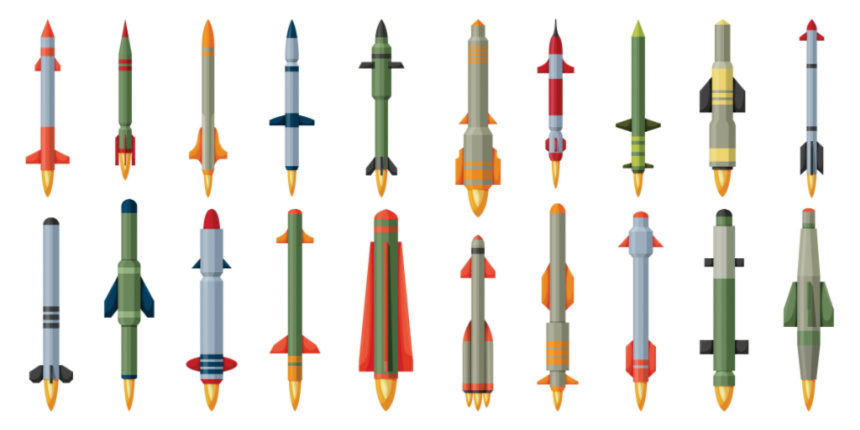MTCR Full Form
What is the full form of MTCR?
The full form of MTCR is the Missile Technology Control Regime. A multilateral export control system is the Missile Technology Control Regime (MTCR). The G-7 industrialised nations created the regime in 1987. By regulating the export of products and technologies that could be used to develop alternative delivery systems (besides manned aircraft) for WMD(Weapons of Mass Destruction), the MTCR aims to reduce the dangers associated with their proliferation. The regime calls on its 35 members, which include the majority of the major missile producers in the world, to impose export restrictions on missiles and related technology that are capable of delivering any kind of WMD or transporting a payload weighing 500 kg and at least 300 kilometres.
- What is the full form of MTCR?
- G-7
- History of MTCR
- Exports To Both Members And Non-Members Are Subject To The MTCR.
- MTCR According to ACA

Since its creation, the MTCR has been attributed to slowing or terminating various missile programmes by making it challenging for potential customers to receive what they want or stigmatising particular activities and programmes. The collaborative Condor II ballistic missile programme of Argentina, Egypt, and Iraq was discontinued. In addition to Taiwan, Brazil, South Africa, South Korea, and South Africa suspended or ended their programmes for missiles or space launchers. A few nations in Eastern Europe, including Poland and the Czech Republic, eliminated their ballistic missile programmes in part to increase their chances of joining the MTCR. 3 The dictatorship has made it harder for Libya and Syria to develop missiles.
G-7
The Group of Seven (G7) is a political forum between the governments of the United States, Canada, France, Germany, Italy, Japan, the United Kingdom, and the European Union (EU), which is also a "non-enumerated member". Its members, which include the world's largest IMF advanced economies and liberal democracies, are formally formed on shared ideas of pluralism and representative government[1]. By 2020, G7 nations will control over half of the world's net wealth (over $200 trillion), 32 to 46 per cent of its gross domestic product, and 10% of its population (770 million people). Members have a significant influence on world affairs and uphold close political, diplomatic, economic, and military ties.
History of MTCR
In April 1987, the G7 nations—Canada, France, Germany, Italy, Japan, the United Kingdom, and the United States—instituted the Missile Technology Control Regime (MTCR). It was developed to stop the spread of unmanned nuclear weapon delivery systems, particularly those that can transport a payload of 500 kilogrammes (1,100 lb) for 300 kilometres (190 mi).
Exports To Both Members And Non-Members Are Subject To The MTCR.
The agreement's aide-mémoire states that it does not override earlier agreements, which according to NATO(North Atlantic Treaty Organization) members permit the supply of Category 1 systems between NATO countries. As an illustration, consider how the United States exported Trident missiles to the United Kingdom for the delivery of nuclear weapons.
It was decided to broaden the MTCR's purview to include the nonproliferation of unmanned aerial vehicles (UAVs) for weapons of mass destruction at the annual meeting, which took place in Oslo from June 29 to July 2, 1992, and was presided over by Sten Lundbo. The MTCR Equipment, Software, and Technology Annex include two categories of forbidden substances.35 countries are members, and India joined on June 27, 2016.
MTCR According to ACA
The Arms Control Association claims that the MTCR has been successful in slowing (or stopping) various ballistic missile programmes, including: "Joint ballistic missile development for the Condor II was stopped by Argentina, Egypt, and Iraq. Additionally, programmes for missiles or space launch vehicles were halted or abandoned in Brazil and South Africa. In part to increase their chances of joining the MTCR, some former Warsaw Pact nations like Poland and the Czech Republic destroyed their ballistic missiles." The MTCR member states established a "no undercut" policy in October 1994, which states that if one member forbids the sale of technology to another nation, all members must follow suit.
Frequently Asked Questions (FAQs)
Its goals are similar to those of the export organisation MTCR. With the support of Russia, France, and the United States, India submitted its application for membership in June 2015, and on June 27, 2016, it was accepted. The MTCR does not include Pakistan. It has expressed a desire to be a part of the organisation but hasn't applied yet.
The voluntary Missile Technology Control Regime (MTCR), which was established in April 1987, aims to prevent the development of ballistic missiles and other unmanned delivery systems that could be used to launch chemical, biological, and nuclear attacks.
The MEA(Ministry of External Affairs) added that the addition of India as the group's 35th member will be "mutually advantageous in furthering international non-proliferation objectives." India formally submitted an application to join the organisation in June 2015 in an effort to better integrate into the world nuclear energy market.
The MTCR and the Hague Code of Conduct, both of which prohibit the spread of ballistic missiles: Recognizing the rising international agreement that may be translated into effective action to lessen this threat, the MTCR has made significant efforts to decrease the proliferation of missiles worldwide.
Italy's veto The US's attempts to get India admitted to the group are thwarted because no other member of the Missile Technology Control Regime (MTCR), which has 34 members and was founded in 1987, supported Italy's decision to veto India's admission.